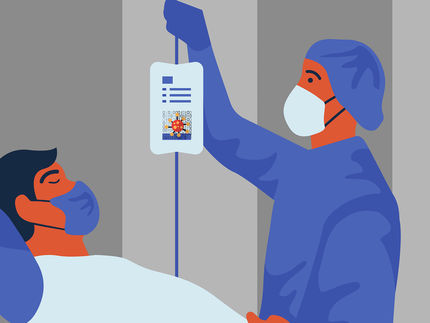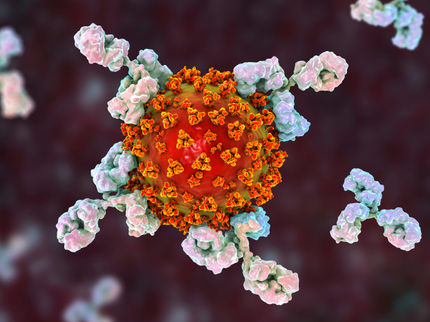“Honey, I shrunk the cookbook” – New approach to vaccine development
Vaccine development aims at protecting as many people as possible from infections
Advertisement
Short protein fragments of pathogens, so-called epitopes, are seen as a promising new approach for vaccine development. In the scientific journal Cell Systems, bioinformaticians from Heinrich Heine University Düsseldorf (HHU) now present a method for identifying those epitopes that promise safe immunisation across the broadest possible population group. They have also computed vaccine candidates against the coronavirus SARS-CoV-2 using their HOGVAX tool.

With the HOGVAX tool, so-called epitopes – short protein fragments of a pathogen that trigger an immune response – can be combined to create novel vaccines. The aim is to maximise population coverage.
HHU / Sara Schulte
During the coronavirus pandemic, so-called mRNA vaccines proved particularly successful and flexible. These vaccines target the so-called spike proteins – characteristic structures on the surface of the virus. The mRNA contains the sequence of the spike protein, which is produced in the body after vaccination and then trains the human immune system.
“Epitopes” – short fragments of pathogen proteins that are capable of triggering an immune response – are seen as an alternative method to mRNA and a promising approach for obtaining targeted immune responses quickly, cost-effectively and safely.
Everyone has a unique immune system: Depending on their infection history, the immune system is trained to handle and react to different proteins. “This is a fundamental problem of vaccines based on epitopes,” explains Professor Dr Gunnar Klau, holder of the Chair of Algorithmic Bioinformatics at HHU. Together with his PhD student Sara Schulte and Professor Dr Alexander Dilthey from the Institute of Medical Microbiology and Hospital Hygiene, he considered a new approach to developing such vaccines.
Professor Klau compares the problem with a chef who needs to create a new dish for a large event: “Some guests have allergies, while others do not like certain ingredients, so the chef needs to select ingredients that as many of the guests as possible can eat and will enjoy.”
Translated to vaccine development, this means that they are seeking epitopes that trigger a good immune response in as many people as possible. This is necessary because it is not possible to pack an unlimited number of protein fragments into a vaccine so that the various immune systems can seek out the sequences suitable for them – the carrier medium simply does not have sufficient capacity.
The team of three researchers took a special approach with their bioinformatic tool “HOGVAX”. Sara Schulte: “Instead of stringing the epitopes for the vaccine together end-to-end, we use identical sequences at the beginning and end of the epitopes so we can overlay them. The identical section, known as the ‘overlap’, is thus only represented once in the vaccine, which enables us to save a huge amount of space.” This in turn enables many more epitopes to be included in a vaccine.
In order to manage the epitopes and their longest overlaps efficiently, the researchers use a data structure known as a “hierarchical overlap graph” (for short: HOG). Klau: “To stay with the cooking analogy: HOG corresponds to a compressed or shrunk cookbook, from which the chef can now select the recipes that are suitable for all guests.”
Professor Dilthey: “As a test, we applied HOGVAX to data for the SARS-CoV-2 virus and we were able to integrate significantly more epitopes than other tools. According to our calculations, we would be able to reach – and immunise – more than 98% of the world population.”
Sara Schulte comments on the further perspectives for their results: “In the future, we will work on adapting HOGVAX for use in cancer therapy. The aim here is to develop agents specifically designed for individual patients that attack tumour cells in a targeted manner.”




















































